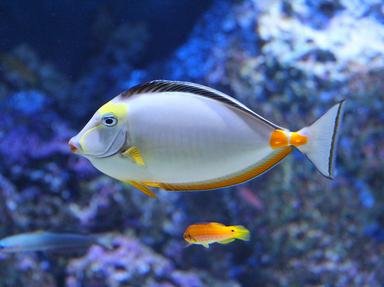Quiz Answer Key and Fun Facts
1. The lake sturgeon, Wisconsin's largest fish, is among the oldest fish species in the world. How far back do they go?
2. The bigmouth buffalo is known for its incredibly long life span. How old have some specimens been carbon dated at?
3. Some anglers actually use their bare hands to capture flathead catfish. What is this fishing technique known as?
4. The muskellunge, Wisconsin's official state fish, is part of what family of fish?
5. The bighead carp has been a major problem as an invasive species. What part of the world did it originate in?
6. The common carp (Cyprinius carpio) is another species introduced to Wisconsin. Where would you be most likely to find it in the wild?
7. The tiger muskellunge is one of the most challenging fish to catch, earning the nickname "the fish of ____________ casts."
8. The lake trout population in Lake Superior has dramatically increased since the 1970s.
9. The chinook salmon (Oncorhynchus tshawytscha) is another species introduced to Wisconsin, What state is it more likely to be found in?
10. In what decade were brown trout introduced to the United States?
Source: Author
parrotman2006
This quiz was reviewed by FunTrivia editor
rossian before going online.
Any errors found in FunTrivia content are routinely corrected through our feedback system.
